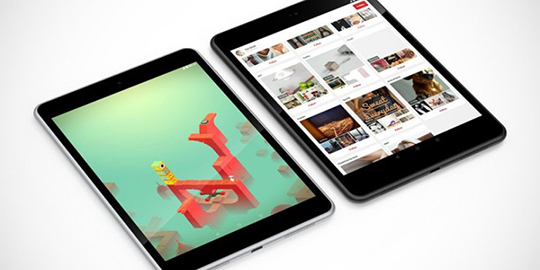
Technology Observatory November 17-23
These are the stories we have lined up for you in this week's Technology Observatory:
● The new YotaPhone 2 to be unveiled to the world on December 3
● LG officially launches its LG G Pad tablets in Spain
● Sony aims to revolutionize smartphone sensors with the new Exmor RS IMX230
● Nokia returns to the fray with Nokia N1, its first tablet with Android
● The galaxy is shrinking: Samsung to make fewer phones in 2015
● Nexus 6 now on sale at Google Play Spain
● Create your first app for Apple Watch with WatchKit
● Yahoo, not Google, to be the new Firefox search engine
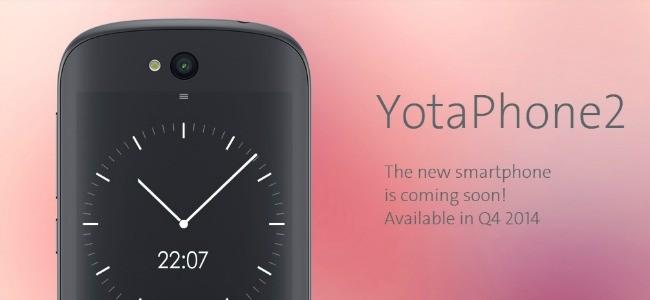
After getting a glimpse of the YotaPhone 2 prototype at the last Mobile World Congress, it seems the final version of this new dual-screen smartphone is finally about to be unveiled: the Russian company Yota Devices has announced December 3 for its presentation to the world. The chief difference with this range of phones is that as well as having a front touchscreen like all its competitors, it has a rear display as well with e-ink technology. This means that you can check your notifications and read emails with minimal battery use. The prototype we saw at the beginning of this year promised a Qualcomm Snapdragon 800 2.3 GHz quad-core processor, 2GB RAM and 32GB internal storage, but we wouldn't be at all surprised if these specifications have been enhanced in the final version to try and compete on an equal footing with other high-end phones. From what we can see from the promotional image, the design of this new phone has been fine-tuned to make the edges more rounded. It seems the device will go on sale at the end of this year, probably just after the official unveiling.
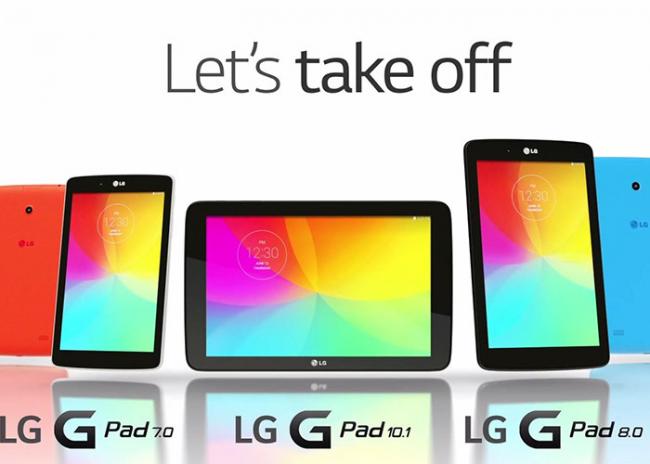
With certain manufacturers it's sometimes hard to understand their motives – for example, when they unveil devices several months before releasing them on the market. This is what happened with the new range of G Pad tablets from LG, which have finally reached Spain months after their official presentation at the beginning of the summer. Basic tablets from the Korean manufacturer, they come in three flavors depending on their size – 7, 8 and 10.1 inches – and with the same successful design that LG has achieved with its recent devices. The LG G Pad 7.0 will retail at 149 euros and is therefore LG's entry-level tablet. It has a 7-inch IPS display with a resolution of 1200 x 800 pixels, works with a Snapdragon 400 1.2GHz chipset, and comes with 1GB RAM and 8GB of expandable internal storage. Supported by Android 4.4 KitKat customized by LG, the tablet has two cameras, 3 and 1.3 megapixels, Wi-Fi connectivity and a 4000 mAH battery which fits neatly into its 189.3 x 119.8 x 10.2 millimeter casing. It weighs in at 293 grams. The medium-sized LG G Pad 8.0 costs 199 euros and has an 8-inch screen with a resolution of 1280 x 800 pixels. This version has 16GB of storage and will have LTE connectivity when it becomes available. One camera has 5 megapixels and the other 1.3, and the battery capacity is 4200 mAH. The total dimensions are 210.8 × 124.2 × 9.9 millimeters and it weighs 344 grams. Finally, the LG G Pad 10.1 is the largest tablet in the range, although at 1280 x 800 pixels the resolution of the 10.1-inch display is the same as the medium-sized version. It comes with the same hardware platform as the smaller models and also 16GB of internal storage. The price tag for this version will be 249 euros. Another difference with this model is its generous 8000 mAH battery, all within a casing that measures 260.9 x 165.9 x 8.95 millimeters and weighs 523 grams. However, this range should not be confused with the high-end G Pad presented earlier this year – the LG G Pad 8.3 – as we're talking about LG's affordable tablets. But with the festive season on the horizon, no doubt we've given you a great gift idea.
Sony is certainly putting its cards on the table as far as mobile reflex photography goes. Only a few days ago the company unveiled its official platform for professional photographers, and now it's given us a peek at the future for smartphone camera sensors. The name of the new sensor announced by the Japanese brand might sound like a tongue-twister, but the Exmor RS IMX230 offers more than a hint at the potential of the camera sensors that will be built into our mobile devices in the future. This new CMOS image sensor is the first to come with up to 192 automatic focus points, which produces better pictures of moving people and objects and will therefore be a great asset, for example, when taking photographs of children and animals. Meanwhile, the significantly improved HDR function supports 4K video recording and a much better quality of photograph. The CMOS has a capacity of 21MP, which will take the quality of your images way beyond anything you can achieve with the cameras currently available. Sony is not new in this – the company has been working on this line since 2012 – and the performance of these sensors will guarantee a much better quality of image in a fairly compact size. The importance of the improved HDR cannot be overestimated, as it means that your smartphone will be able to record with 4K image quality, a much acclaimed function of world-renowned cameras like the GoPro that will now be possible with your mobile device. The new sensor will reach markets around April 2015, more or less around the same time that the company will upgrade its Xperia terminals. This could be a ploy to promote sales of its new smartphone line, but on the other hand it's certainly true that Apple, for example, is also working on Exmor sensors and promises to keep on revolutionizing the market with its iPhone and iPad cameras. So the question is this: Are we about to witness an open battle between high-end smartphone cameras?
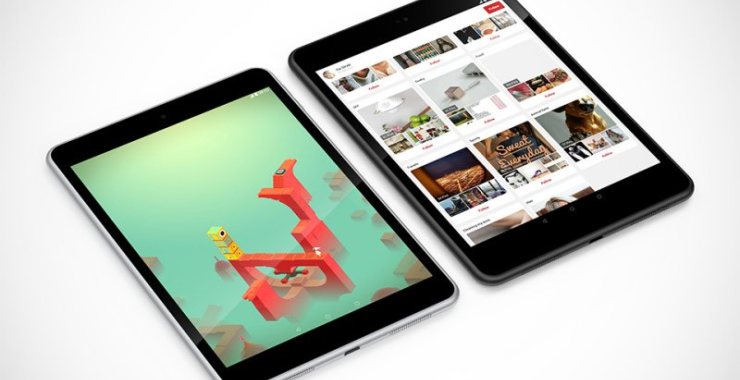
Following Microsoft's purchase of the mobile division, there was little left of the Nokia we once knew. But the bits that were left teamed up, and like a phoenix they have risen from the ashes and returned to the consumer market. How? Courtesy of the Nokia N1, the company's the new Android tablet. The first thing that strikes you about the Nokia N1 is its technical specifications, which place it on a par with the main tablets in the sector:
● SoC: Intel Atom Z3580 2.3 GHz 64 bits
● GPU: PowerVR G6430 533 MHz
● Display: 7.9-inch, IPS and Gorilla Glass 3
● Resolution: 2048 x 1536 (4:3)
● Audio: Two 0.5W stereo loudspeakers + Wolfson WM8958E DAC
● RAM: 2GB
● Internal memory: 32GB
● Thickness: 6.9 millimeters
● Weight: 318 grams
● Primary camera: 8 megapixels
● Secondary camera: 5 megapixels
● Connectivity: Wi-Fi a/b/g/n/ac, Bluetooth 4.0 and reversible microUSB 2.0
● Battery: 5300 mAh
● Software: Android 5.0 Lollipop + Z Launcher
Nokia has included a 64-bit SoC made by Intel, which is capable of exploiting the full potential of the new Android 5.0 Lollipop system (thanks to built-in support for this architecture). It also boasts a powerful GPU like the PowerVR G6430 and the excellent Wolfson DAC that audiophiles have always praised (the Galaxy S, which attracted rave reviews for its sound, included a DAC from this same company). Although yet to be tested, the images and figures provided by the manufacturer suggest that the construction of this N1 is solid and robust, something for which Nokia products have always been renowned. It is made entirely out of aluminum, which gives it that premium touch that very few companies achieve with their products. Besides, being so slim and light (just 6.9 millimeters and 318 grams) it will be a very convenient and portable tablet to use. Two standout features of the Nokia N1 are the laminated display and reversible microUSB connector. A laminated display, as many of you will know, is achieved by removing several intermediate layers, giving the tablet a more authentic, glass-like look. Naturally, the glass we're talking about is Gorilla Glass 3, which provides enhanced scratch resistance. The second standout is the reversible microUSB connector. This standard was presented months ago but until now no manufacturer had entertained it. Nokia is the first in this respect, which is undoubtedly a firm step with regard to the future – a future in which every manufacturer will eventually adopt this new microUSB mode. The tablet will be released at the beginning of 2015 with a price tag of 250 euros + VAT, which is extremely competitive for a device of these characteristics. China will be the first market it reaches, and then it will gradually find its way to stores in selected European countries. For the moment there's no mention of Latin America, the USA or anywhere else. Nokia is back, and seemingly in just as good health as ever.
We've made plenty of quips in the past about how prolific Samsung is, but now it looks like the joke might soon be old hat. The last quarterly results (with earnings practically halved, or down by 49% to be precise) have persuaded the company to re-assess its production schedule. So much so, as they have admitted to The Wall Street Journal, they will be axing the number of smartphone models released next year in the hope of cutting costs and combating the obvious decline in earnings. Furthermore, a company executive told the U.S. newspaper they are also thinking of increasing the number of components that their mid-range and high-end phones share in order to optimize resources. Having fewer models will enable them to improve their supply chain management at a time when analysts say the demand for Galaxy terminals is on the wane. In short, the idea is to cut the number of models by between 25% and 30% in 2015, which means there won't be as many galaxies on the shelves. Best of all, it might even be a good thing.
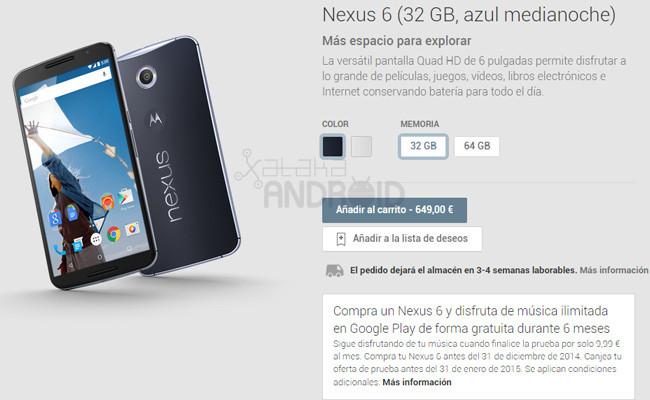
Finally! Google Play has just released the Nexus 6 in Spain. Google's first phablet is now on sale in this country from 649 euros and in two colors (midnight blue and cloud white), though for the moment only the 32GB version. The first orders will ship in three to four weeks. Currently, when you buy the Nexus 6 on Google Play you get six free months of unlimited music with Google Play Music and the new YouTube Music Key. The offer is only valid for purchases before December 31, 2014 and you have to activate it by January 31, 2015. Made by Motorola, the Nexus 6 has a 5.96-inch AMOLED display, QuadHD (2560 x 1440 pixels), Qualcomm Snapdragon 805 2.7 GHz quad-core processor, Adreno 420 GPU, 3GB RAM and 32GB/64GB non-expandable internal memory, two cameras (13 and 2 megapixels), front-facing stereo speakers and a fast-charging 3220 mAh battery.
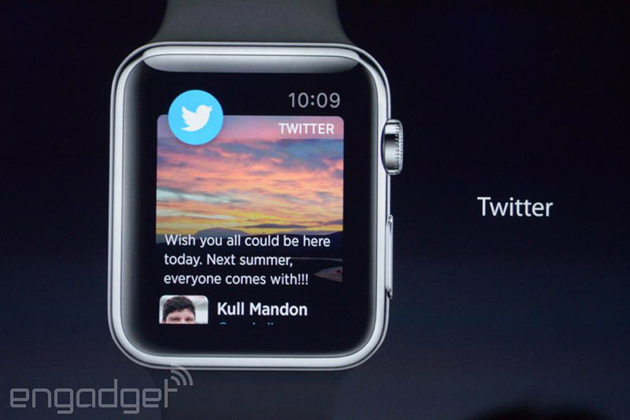
Keen to start punching keys and invent your first app for Apple Watch? Well, you're in luck! Apple has launched the much-anticipated WatchKit, a set of tools to get developers developing their apps and helping to grow the watch from Cupertino. The utility has arrived with the release of the iOS 8.2 beta and will allow developers to control aspects like the force of touch on the display and notifications while discovering the first surprises offered by the device. For example, Steve Troughton-Smith has found out that the two versions of Apple Watch (38 and 42 mm) will have different resolutions: 272 x 340 and 312 x 390, respectively. We'll have to wait until Apple finally releases the watch some time in 2015 to get the complete lowdown, but in the meantime it will be good to start finding out all this information.
Google usually sends a cake to Mozilla every time a new version of Firefox comes out, but now this custom will undoubtedly be abandoned as Firefox has just split with Google after adopting Yahoo as its default search engine, at least in the United States, according to a report in zdnet.com. The Mozilla blog states that the contract with Yahoo will last five years, so it's obviously not just a test but something more definite. Mozilla has posted a few screen captures showing what Firefox users will see when they enter the Yahoo engine, but the interface will be personalized and improved when the change process begins (between December 2014 and January 2015). If this sounds like bad news for Google, it might be even worse for Firefox, as many users might not welcome the change (to be honest, there's no comparison between the quality of the Google engine and Yahoo), and they might swap from Firefox to Chrome to be able to continue using Google as the default engine. True, initially Yahoo will notice a vast increase in use (17% of users worldwide use Firefox), but they're unlikely to sustain the growth for very long.
